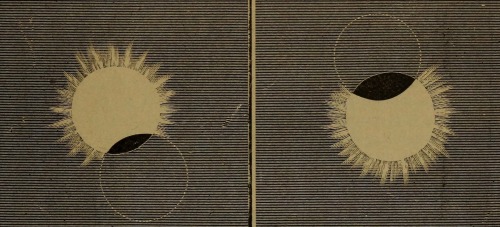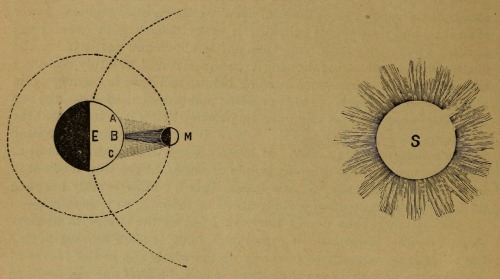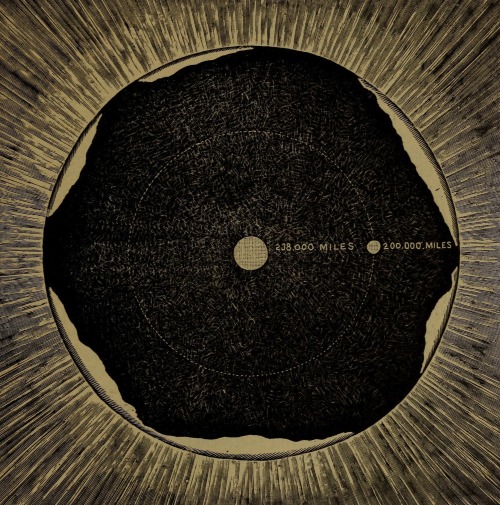Samuel W. Hall. Corona Of An Eclipse, Moon Hiding Lower And Upper Limb Of Sun, Eclipse Of The Sun, Moon







Samuel W. Hall. Corona of an Eclipse, Moon Hiding Lower and Upper Limb of Sun, Eclipse of the Sun, Moon Hiding Upper and Lower Limb of Sun, Comparative Size of the Planets, Size of the Sun, Elliptical Orbit. Sunshine and Moonlight; with; also, a Flash of Comets, Meteors and Shooting Stars, and a Twinkle of Starlight. 1889. Contd from here
More Posts from Hannahhaifisch and Others

Apollo Rise - 2/8
Download full pack


Moss Green Halite
Locality: Sieroszowice Mine, Lower Silesia, Poland

A movie showing the dynamics of the inner part of the Crab Nebula made using the Chandra X-ray Observatory.
Credit: NASA/CXC/ASU/J.Hester et al.


Physicists Confirm Quantum Theory Proposed in 1930s
http://www.sci-news.com/physics/quantum-tunneling-water-05422.html

Constellation de nuit pour papa ❤️ #origami #tessellation #papa

Another Ferrofluid representation

Atpvts



How spheres impact water has been studied for more than a century. The typical impact for a rigid sphere creates a cavity like the one on the upper left - relatively narrow and prone to pinching off at its skinny waist. If the sphere is elastic –squishy – instead, the cavity ends up looking much different. This is shown in the upper right image, taken with an elastic ball and otherwise identical conditions to the upper left image. The elastic ball deforms; it flattens as it hits the surface, creating a wider cavity. If you watch the animations in the bottom row, you can see the sphere oscillating after impact. Those changes in shape form a second cavity inside the first one. It’s this smaller second cavity that pinches off and sends a liquid jet back up to the collapsing splash curtain.
From the top image, we can also see that the elastic sphere slows down more quickly after impact. This makes sense because part of its kinetic energy at impact has gone into the sphere’s shape changes and their interaction with the surrounding water.
If you’d like to see more splashy stuff, be sure to check out my webcast with a couple of this paper’s authors. (Image credits: top row - C. Mabey; bottom row - R. Hurd et al., source; research credit: R. Hurd et al.)
-
 rustyheart1 liked this · 1 year ago
rustyheart1 liked this · 1 year ago -
 needlework-hearts reblogged this · 1 year ago
needlework-hearts reblogged this · 1 year ago -
 llanonelson liked this · 2 years ago
llanonelson liked this · 2 years ago -
 lecaldecasa reblogged this · 3 years ago
lecaldecasa reblogged this · 3 years ago -
 lecaldecasa liked this · 3 years ago
lecaldecasa liked this · 3 years ago -
 ironpatroltacocookie reblogged this · 4 years ago
ironpatroltacocookie reblogged this · 4 years ago -
 ironpatroltacocookie liked this · 4 years ago
ironpatroltacocookie liked this · 4 years ago -
 muffinmood reblogged this · 4 years ago
muffinmood reblogged this · 4 years ago -
 shimma96 liked this · 4 years ago
shimma96 liked this · 4 years ago -
 devourmevoid liked this · 4 years ago
devourmevoid liked this · 4 years ago -
 spherical-aberration liked this · 6 years ago
spherical-aberration liked this · 6 years ago -
 rex-luscus liked this · 6 years ago
rex-luscus liked this · 6 years ago -
 rivermusic liked this · 6 years ago
rivermusic liked this · 6 years ago -
 scarrediris liked this · 6 years ago
scarrediris liked this · 6 years ago -
 gabriel4sam liked this · 6 years ago
gabriel4sam liked this · 6 years ago -
 wrennette reblogged this · 6 years ago
wrennette reblogged this · 6 years ago -
 wrennette liked this · 6 years ago
wrennette liked this · 6 years ago -
 violetcoil reblogged this · 6 years ago
violetcoil reblogged this · 6 years ago -
 violetcoil liked this · 6 years ago
violetcoil liked this · 6 years ago -
 fabi-ml liked this · 7 years ago
fabi-ml liked this · 7 years ago -
 deukes liked this · 7 years ago
deukes liked this · 7 years ago -
 themagiclantern liked this · 7 years ago
themagiclantern liked this · 7 years ago -
 enigmaticwizard reblogged this · 7 years ago
enigmaticwizard reblogged this · 7 years ago -
 -louu--- liked this · 7 years ago
-louu--- liked this · 7 years ago -
 chipslaysandcheetos liked this · 7 years ago
chipslaysandcheetos liked this · 7 years ago -
 tenebris-lunam reblogged this · 7 years ago
tenebris-lunam reblogged this · 7 years ago -
 nostalgicell reblogged this · 7 years ago
nostalgicell reblogged this · 7 years ago -
 q-bishop liked this · 7 years ago
q-bishop liked this · 7 years ago -
 pikralides reblogged this · 7 years ago
pikralides reblogged this · 7 years ago -
 pikralides liked this · 7 years ago
pikralides liked this · 7 years ago -
 leondemartin76 reblogged this · 7 years ago
leondemartin76 reblogged this · 7 years ago -
 keepitsillyyoubumbum liked this · 7 years ago
keepitsillyyoubumbum liked this · 7 years ago -
 abodden1 liked this · 7 years ago
abodden1 liked this · 7 years ago -
 gonturan0 liked this · 7 years ago
gonturan0 liked this · 7 years ago -
 itsgivingman liked this · 7 years ago
itsgivingman liked this · 7 years ago -
 reiamoure reblogged this · 8 years ago
reiamoure reblogged this · 8 years ago -
 sa7ira reblogged this · 8 years ago
sa7ira reblogged this · 8 years ago